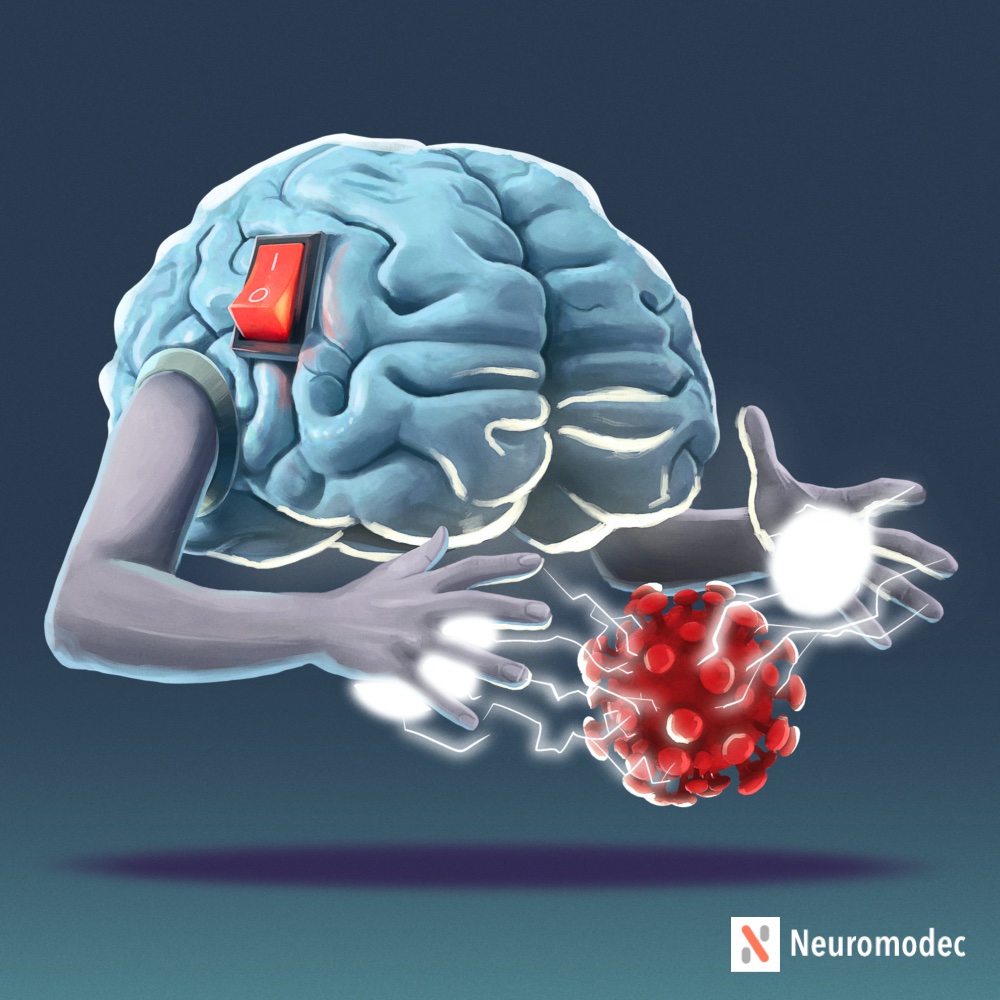
1. Nature: Restoring Smell with an Electronic Nose
Among the complex effects of COVID-19 is the loss of their sense of smell - a condition called anosmia. For most people who get COVID-19, the loss of smell is brief and recoverable, but some individuals do not regain their sense of smell for 6 months or longer. Such individuals with persistent symptoms would have Long-Covid - also called Post-Acute Sequelae of SARS CoV-2 infection (PASC). Researchers Richard Costanzo and Daniel Coelho have developed a prototype of a device that could help to restore an individual’s sense of smell using electrically stimulating various areas of the olfactory bulb. Their work and others were featured in a review in Nature.
2. Olfactory Training With Noninvasive Brain Stimulation Improves COVID-19 smell loss
Non-invasive brain stimulation with transcranial direct current stimulation was reported to significantly improved smell performance in patients with anosmia (smell loss) following COVID-19 infection, according to report published in the Journal of Neurology, Neurosurgery, and Psychiatry. Full citation: Reference Vestito L, Mori L, Trompetto C, et al. Impact of tDCS on persistent COVID-19 olfactory dysfunction: a double-blind sham-controlled study. J Neurol Neurosurg Psychiatry. Published online May 23, 2022. doi:10.1136/jnnp-2022-329162
3. Perspective: Neuromodulation offers hope for patients with long-COVID
Dr. Marom Bikson provides an overview of the prospects of brain stimulation for PASC (Long-COVID) in Neuronews. “Low-intensity neuromodulation techniques, such as VNS and tDCS, are considered safe and well-tolerated, so much so that they are used in healthy volunteers in experiments on normal brain function. This will favorably factor into condensing the risk versus benefit of any new treatment. Ongoing and expanded studies are needed to prove if neuromodulation is effective for PASC, including understanding which type of treatment should be used for which patients.”
4. NIH: Volunteers Needed for RECOVER Studies
The National Institutes of Health (NIH) through its “Researching COVID to Enhance Recovery” (RECOVER) initiative is recruiting research volunteers for ongoing trials. According to the call “To fully understand the long-term effects of COVID, RECOVER needs the help of many people – people who have COVID now, have had COVID in the past, or have not had COVID at all. Thanks to research volunteers, RECOVER has enrolled thousands of participants nationwide. Volunteers are still needed to make sure all types of people from across the country, including adults, pregnant people, and children, are included in these studies.” More information on RECOVER trial here and you can find Neuromodec’s general list of COVID trials here.
5. Consensus Review: Neuromodulation Strategies to Reduce Inflammation and Improve Lung Complications in COVID-19 Patients
Published in Frontiers, a new review summarizes: “Since the outbreak of the COVID-19 pandemic, races across academia and industry have been initiated to identify and develop disease modifying or preventative therapeutic strategies has been initiated. The primary focus has been on pharmacological treatment of the immune and respiratory system and the development of a vaccine. The hyperinflammatory state (“cytokine storm”) observed in many cases of COVID-19 indicates a prognostically negative disease progression that may lead to respiratory distress, multiple organ failure, shock, and death. Many critically ill patients continue to be at risk for significant, long-lasting morbidity or mortality. The human immune and respiratory systems are heavily regulated by the central nervous system, and intervention in the signaling of these neural pathways may permit targeted therapeutic control of excessive inflammation and pulmonary bronchoconstriction. Several technologies, both invasive and non-invasive, are available and approved for clinical use, but have not been extensively studied in treatment of the cytokine storm in COVID-19 patients. This manuscript provides an overview of the role of the nervous system in inflammation and respiration, the current understanding of neuromodulatory techniques from preclinical and clinical studies and provides a rationale for testing non-invasive neuromodulation to modulate acute systemic inflammation and respiratory dysfunction caused by SARS-CoV-2 and potentially other pathogens. The authors of this manuscript have co-founded the International Consortium on Neuromodulation for COVID-19 to advocate for and support studies of these technologies in the current coronavirus pandemic.”
6. New Trial Result: Stimulating Vagus Nerve Has Anti-Inflammatory Effects On Covid
The Vagus nerve extends from the brain to most organs in the human body and regulates anti-inflammatory responses, making it a target for electrical stimulation in conditions of imbalanced inflammatory response. The vagus nerve may be activated by stimulation of its auricular branch in the ear using a technique called transcutaneous auricular Vagus Nerve Stimulation (taVNS). ScienceBlog summarizes ongoing work from the Vienna University of Technology to both develop taVNS technology and apply it to COVID-19 disorders.